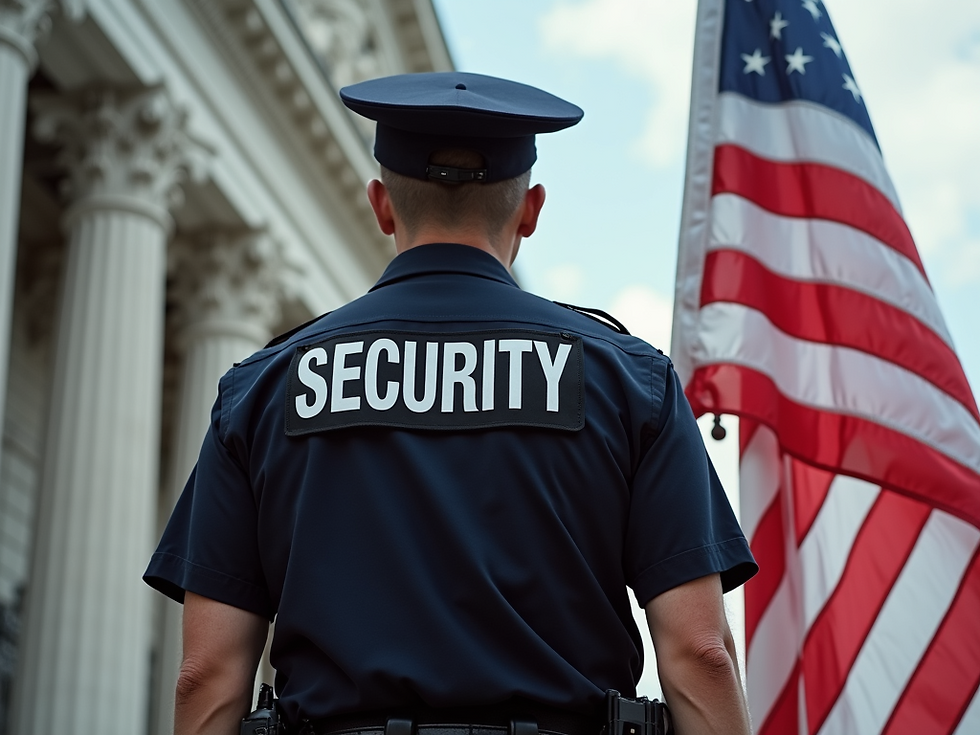How to Reduce Risks in Retail Environments
- Amuleki Moala
- Sep 23
- 4 min read
Retail environments face a variety of risks daily, from theft and vandalism to employee safety and operational disruptions. Managing these risks effectively is crucial to maintaining a safe, profitable, and welcoming space for customers and staff alike. This article explores practical strategies to reduce risks in retail settings, focusing on the role of retail security and how businesses can implement robust measures to protect their assets and people.
Understanding the Importance of Retail Security in Risk Reduction
Retail security plays a vital role in minimizing risks that can impact a store’s operations and reputation. Security measures help deter criminal activity, ensure compliance with safety regulations, and create a secure environment that encourages customer confidence.
Some common risks in retail environments include:
Shoplifting and employee theft
Vandalism and property damage
Workplace violence and harassment
Fire hazards and emergency situations
Data breaches and cyber threats
By addressing these risks proactively, retailers can reduce losses, avoid legal issues, and improve overall business continuity.
Practical Steps to Enhance Retail Security
Install Surveillance Systems
Use CCTV cameras strategically placed to cover entrances, exits, cash registers, and aisles. Modern systems offer high-definition video and remote monitoring capabilities.
Train Employees on Security Protocols
Educate staff about recognizing suspicious behavior, handling emergencies, and following loss prevention procedures.
Control Access to Sensitive Areas
Limit entry to stockrooms, offices, and cash handling areas using keycards or biometric systems.
Implement Inventory Management Systems
Track stock levels and movements to quickly identify discrepancies that may indicate theft or errors.
Maintain a Visible Security Presence
Employ security personnel or use uniformed staff to deter potential offenders.

Key Components of Retail Security to Mitigate Risks
Retail security is a multi-layered approach combining technology, personnel, and policies. Each component plays a specific role in risk reduction.
Physical Security Measures
Locks and Alarms: Secure doors and windows with high-quality locks and alarm systems that alert staff and authorities during unauthorized access.
Lighting: Well-lit interiors and exteriors reduce hiding spots and increase visibility.
Security Guards: Trained guards provide immediate response capabilities and a deterrent effect.
Technological Solutions
Electronic Article Surveillance (EAS): Tags and sensors on merchandise trigger alarms if items are removed without payment.
Point of Sale (POS) Monitoring: Software that flags unusual transactions or voids.
Cybersecurity: Protect customer data and payment systems from hacking and fraud.
Policy and Training
Loss Prevention Policies: Clear guidelines on handling suspected theft, reporting incidents, and disciplinary actions.
Emergency Response Plans: Procedures for fire, medical emergencies, or violent incidents.
Regular Training: Ongoing education to keep staff updated on best practices.
Retailers who integrate these components create a comprehensive security framework that significantly reduces risks.
What is Retail Security Called?
Retail security is often referred to as loss prevention or retail loss prevention. This term encompasses all strategies and measures designed to prevent theft, fraud, and damage within retail settings. Loss prevention specialists focus on identifying vulnerabilities, investigating incidents, and implementing controls to protect merchandise and assets.
In addition to loss prevention, retail security may also be known as:
Asset protection
Shoplifting prevention
Retail risk management
These terms highlight different aspects of the same goal: safeguarding the retail environment from internal and external threats.

How to Choose the Right Retail Security Services
Selecting the right retail security services is essential for effective risk management. Professional security providers offer expertise, technology, and personnel tailored to the unique needs of retail businesses.
Factors to Consider
Experience and Reputation: Look for companies with proven success in retail security.
Range of Services: Ensure they provide comprehensive solutions including guards, surveillance, and consulting.
Customization: Services should be adaptable to your store size, location, and risk profile.
Technology Integration: Providers should offer modern security systems compatible with your existing infrastructure.
Response Capabilities: Quick and effective incident response is critical.
Retailers can benefit from partnering with specialized retail security services that understand the nuances of retail risk and provide tailored solutions.
Benefits of Professional Retail Security Services
Deterrence of Criminal Activity: Visible security presence discourages theft and vandalism.
Expert Incident Handling: Trained personnel manage situations calmly and efficiently.
Improved Customer Experience: A safe environment encourages repeat business.
Compliance Support: Helps meet legal and insurance requirements.

Best Practices for Ongoing Risk Reduction in Retail
Risk reduction is an ongoing process that requires regular review and adaptation. Retailers should implement these best practices to maintain a secure environment:
Conduct Regular Security Audits: Identify new vulnerabilities and update security measures accordingly.
Engage Employees: Encourage staff to report suspicious activity and participate in security training.
Use Data Analytics: Analyze sales and inventory data to detect patterns indicating theft or fraud.
Maintain Clear Signage: Inform customers about security measures to deter potential offenders.
Collaborate with Law Enforcement: Build relationships with local police for support and advice.
By continuously improving security protocols, retailers can stay ahead of emerging threats and protect their business effectively.
Enhancing Safety Beyond Theft Prevention
While theft prevention is a major focus, retail security also encompasses broader safety concerns:
Emergency Preparedness: Develop evacuation plans and conduct drills for fires, natural disasters, or violent incidents.
Health and Safety Compliance: Ensure the store meets OSHA and other regulatory standards.
Customer and Employee Wellbeing: Address harassment, bullying, and other workplace safety issues.
A holistic approach to retail security creates a safer, more welcoming environment for everyone.
Implementing strong retail security measures is essential for reducing risks in retail environments. From physical safeguards and technology to professional services and ongoing training, every element contributes to a safer, more resilient business. By prioritizing security, retailers protect their assets, employees, and customers, ensuring long-term success in a competitive market.




Comments